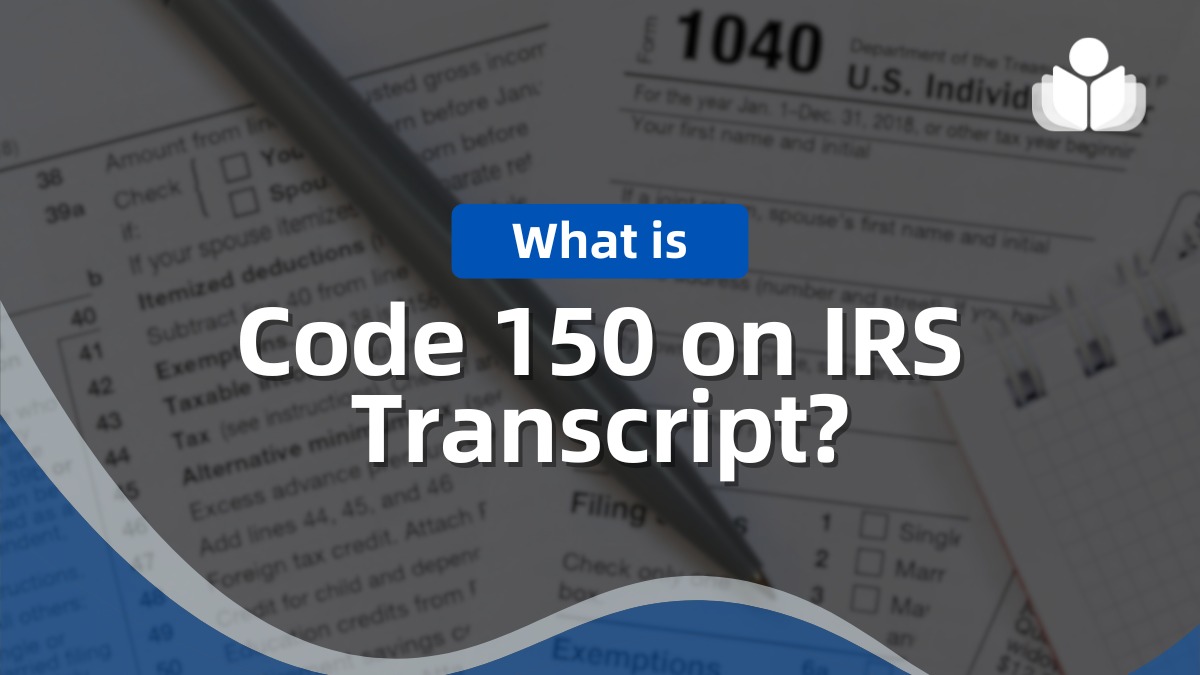Code 150 on IRS transcripts often confuses taxpayers. This code helps people understand the status of their tax returns and impacts how long it takes to process taxes. To get a clear picture of their tax situation, people need to know what this code means.
We’ll explain Code 150 and why it matters when checking tax returns. You’ll learn about how long it takes the IRS to process tax returns, how to read the information linked to this transaction code, and what happens after Code 150 shows up on your tax account transcript.
By looking into these things, taxpayers can better understand their IRS online account and make smart choices about their taxes.
What is IRS Code 150?
Definition of Code 150
When you spot Code 150 on your IRS transcript, it means the IRS has given your tax return the green light and started working on it, creating a current-year file under your name. The code often shows up alongside a dollar amount, reflecting the assessed tax liability.
However, don’t jump to conclusions just because there’s a tax assessment doesn’t necessarily mean you’ll owe money. Future credits might balance things out.
Where to Find Code 150 on Your Transcript
To locate Code 150 on your IRS transcript, you’ll need to access your tax account transcript. Once you’re in, look for the “Transaction Codes” section or “Account Activity.” Code 150 will typically be listed alongside the date the IRS accepted your return, and it might also show an amount reflecting your assessed tax liability. You’ll find this code early in the transcript, as it’s one of the first indicators that your return has been processed.
Significance of Code 150
The appearance of Code 150 on a transcript has several important implications:
- Initial Processing Confirmation: Code 150 indicates that the IRS has accepted your tax return for processing.
- Creation of Taxpayer File: It marks the point when a current-year file for the taxpayer is created.
- Assessment of Tax Liability: The code may be accompanied by a dollar amount representing the initial tax liability assessed by the IRS.
- Not a Final Indicator of Tax Due: The presence of a tax liability amount doesn’t automatically mean you owe money, as credits and other adjustments may reduce or eliminate the liability later on.
- Early Stage in Transcript: Code 150 appears early in your transcript, signifying one of the first steps in the processing of your return.
The IRS might include codes with future dates on transcripts to let taxpayers know when to anticipate the next steps in their return processing. Although Code 150 marks an important stage in the processing journey, it doesn’t reveal whether the final outcome will be in the taxpayer’s favor or not.
The IRS Tax Return Processing Timeline
Initial Acceptance of Tax Return
The process begins once the IRS accepts your tax return. This initial acceptance typically follows a quick review to ensure your return is complete and ready for further processing. At this stage, you’ll often see a code, like Code 150, on your IRS transcript confirming that your return has been received and a current-year file has been created for you.
Processing Stages
- Initial Review: The IRS conducts a preliminary review to ensure the return is complete and ready for processing.
- Verification: The IRS checks the accuracy of the return, including income, credits, and deductions.
- Error Resolution: If discrepancies or errors are found, the return may be flagged for further review, which could delay processing.
- Final Assessment: The IRS finalizes the tax liability, applying any eligible credits or deductions.
- Issuance of Refund or Notice: Depending on the outcome, the IRS either issues a refund or sends a notice of balance due.
Timeframes for Different Filing Methods
- Electronic Filing (e-file): Generally processed within 21 days, making it the fastest option.
- Paper Filing: Takes significantly longer, often requiring up to six weeks or more for complete processing.
- Hybrid Filing: Combining e-file with direct deposit for refunds can speed up the overall process, typically reducing the wait time for your refund.
- Amended Returns: Processing for amended returns can take up to 16 weeks or longer, regardless of the filing method.
Understanding these stages and timelines helps set your expectations as you wait for the IRS to complete the processing of your tax return.
Interpreting Other Information Associated with Code 150
Date next to Code 150
The date that appears alongside Code 150 on your IRS transcript represents the official date when your tax return was accepted for processing by the IRS. This date is important because it marks the start of the IRS processing timeline. While it doesn’t indicate when the entire process will be completed, it gives you a reference point for when the IRS began working on your return.
Cycle Code Explanation
- Format of Cycle Code: The cycle code is typically an eight-digit number, with the first six digits indicating the processing year and week and the last two digits representing the day of the week.
- Processing Year and Week: The first six digits (e.g., 202415) show the year (2024) and the IRS processing week (15th week of the year).
- Day of the Week: The last two digits indicate the specific day within the processing week, ranging from “01” for Monday to “05” for Friday.
- Purpose: The cycle code helps you understand when the IRS processed your return, giving you an idea of the timeline for future actions, such as issuing refunds or notices.
- Useful for Estimations: By interpreting the cycle code, you can better estimate when you might see further updates or receive a refund, depending on how your return progresses through the IRS system.
Amount listed With Code 150
If a dollar amount is shown next to Code 150, it reflects the initial tax liability that the IRS has assessed based on your return. However, this figure isn’t necessarily what you will owe, as it doesn’t account for any payments, credits, or adjustments that may be applied later.
It’s essential to view this amount as a preliminary figure, subject to change as your return goes through further processing stages and potential offsets are applied.
What Comes After Code 150?
Potential Next Steps in Processing
After Code 150, your tax return moves through several additional processing steps. These can include the IRS verifying your income, credits, and deductions and checking for errors or discrepancies. Depending on the complexity of your return, the next steps might involve further review, corrections, or adjustments. If everything checks out, the IRS will either prepare to issue your refund or assess any balance due.
Other Important Transaction Codes to Watch for
As your return continues through the IRS system, other transaction codes may appear on your transcript. Some key ones to look out for include:
- Code 806: Represents the credit for federal income tax withheld and is often linked to your refund.
- Code 766/767: Reflect any credits applied to your account, such as refundable credits.
- Code 846: Indicates the IRS has issued your refund.
- Code 570: Suggests a hold or delay in processing, often due to additional review or verification needed.
- Code 971: Signals that the IRS has sent a notice or letter, which might require action from you.
When to Expect Your Refund or Tax Bill
The timing of your refund or tax bill depends on several factors, including how quickly your return moves through the IRS processing stages. If everything proceeds smoothly, you could see a refund issued within three weeks of e-filing or longer if you filed by paper.
However, if the IRS identifies issues or discrepancies, this could delay your refund. In cases where a balance is due, you’ll receive a notice indicating the amount owed and the due date. The transaction code 846 is a positive sign that your refund has been approved and is on its way.
FAQs
Conclusion
Getting a handle on Code 150 on IRS transcripts helps you understand how tax returns get processed. This code shows the IRS has your return and has worked on it, which sets things in motion. When you know what this code means and how to read related info, you can better deal with your taxes and know what to expect about refunds or payments.
The tax return journey doesn’t stop at Code 150 but goes on with more checks and possible changes. Watching other key codes and knowing the overall schedule can keep you in the loop about where your taxes stand. In the end, knowing these codes and steps helps you tackle your taxes with more confidence and skill.
 Sections of this topic
Sections of this topic
















